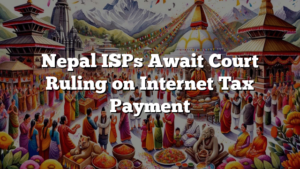
Now TV service providers in Nepal are required to charge separately for internet and TV services. The Nepalese government has implemented the A La Carte pricing system, with the Ministry of Communication, Information and Technology announcing the decision following a ministerial meeting on the 15th of Chait.
The Ministry has stated that the fees for TV and internet services cannot be linked, and that providers must display separate fees for each service. However, the combined fees cannot exceed the current rates.
Under the new decision, internet services provided under the Telecommunication Act, 2053 cannot be bundled with broadcasting services provided under the National Broadcasting Act, 2049. The maximum monthly fee for TV broadcasting is set at 500 Nepalese rupees, with the fee for internet services set according to the Telecommunications Act, 2053.
Rule 11(4) of the National Broadcasting Regulations, 2052 mandates that licensed organizations that distribute TV channel signals, such as Cable, MSO, DTH, IPTV, MMDS, DITB etc., must charge transparent, systematic, and scientific fees. The A La Carte pricing system has been implemented.
TV service providers can now charge a minimum fee of Rs 250 per month under the new pricing system. This package should include Nepalese and foreign free-to-air TV channels, offering informational, news, educational, entertaining, and sports content.
For broadcasting free channels, fees can be determined separately or based on a bundle of channels. Each bundle must not exceed 40 Nepalese rupees, and no more than 250 rupees per month can be charged for free TV channels.
Under the new rule, TV service providers cannot charge more than 500 rupees per month for paid and basic packages. Consumers can choose whether to access free TV channels or not. Additionally, broadcasting foreign free TV channels in Nepal with downlink permission requires selecting a local Nepali organization or distributor, working with them, and providing the signal to all Nepali broadcasting organizations without discrimination.
Related:



